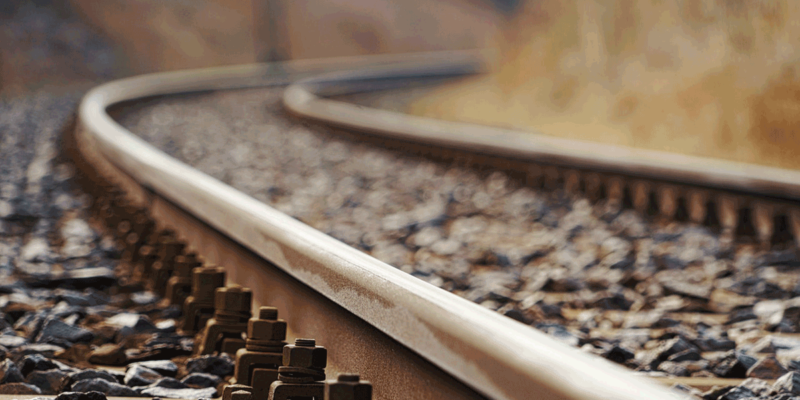Tracks are for trains…and primarily only trains. Accordingly, keeping rail rolling relies on rail infrastructure being fully operational, free from intrusion, clear of obstruction, secure and safe. As such, several layers of asset protection and intruder prevention are employed to protect critical rail infrastructure. Although physical barriers may be a strong deterrent, real-time awareness of an intruder or hazard can prevent collision, injury and even death.
Moving both passengers and freight around the country, the Rail Industry in Australia contributes $26 billion to the GDP and employs over 142,000 workers. Being a key component of infrastructure and logistics, it is essential that any interruption is avoided. With rail lines and track assets being secure from intrusion, the rail line being free from obstruction and the rolling stock being operational and free from vandalism.
In this article we discuss the problems encountered in critical rail infrastructure protection, and how FLIR Thermal imaging can provide the awareness and detection necessary to keep rail rolling on schedule, safe and secure.
Critical Rail Infrastructure Protection
The protection of critical rail infrastructure typically encompasses several layers, including static deterrents such as fences, signs and gates, as well as dynamic deterrents such as security patrols. Additionally, CCTV affords both a physical deterrent by observable placement, as well as a dynamic deterrent by means of awareness through observation. However, CCTV has its limitations due to the need for lighting the area of observation and the effects of weather such as fog and/or smoke. As well as the additional requirement for an operator to watch the video output and become aware of any intrusion or obstruction.
On the other hand, thermal imaging with integrated automatic incident detection (AID) can provide 24/7 automatic detection and awareness regardless of conditions. Initiating an alert when necessary to facilitate preventative or corrective measures. With the intention of avoiding impact, track interruption or damage to property.
Hazard Detection
Unlike a road hazard that can often be temporarily mitigated via a detour. Rail often has limited choices around alternate routes. Typically, only being able to switch to a parallel track or wait until the obstruction or incident is clear. Depending on the element of rail infrastructure, its physical structure and the dynamics of that location, different hazards will be more prevalent. Requiring a slight variation in detection focus and algorithm. For example:
Platforms

Railway platforms that have open air access to the rail line; beyond the edge of the platform, present a fall hazard should a member of the public not watch where they are walking. Whether intentional or not, a fallen person off a railway platform is at serious risk of further injury or death. Should an approaching train not be aware or their presence or be unable to stop in time to prevent a collision. At the fringes of the platform detection of trespass is also important, as it provides an easy access point onto the track system.
Tunnels

Trespass and vandalism in tunnels is often hard to monitor due to lack of light and concealment from public view. With minimal entry and exit points, a tunnel intruder is at an increased level of danger, as the both the approaching train and intruder most likely will not become aware of the danger until it is too late. At the same time a train driver in a tunnel for the most part is relying on and trusting the track signals to indicate safe and permitted passage. Hence, early detection of a tunnel obstruction is important, so the message can be relayed down the line to approaching trains.
Furthermore, fire presents an increased hazard in tunnels due to the enclosed air space and lack of available access. Hence, fire detection is also of utmost importance in tunnels, where early detection can prevent train entry and keep passengers and freight safe from harm.
Tracks

Obstruction of tracks can come in many forms. Fallen freight, trees, livestock and humans all present a potential to cause damage and interrupt rail services. Unlike a car driver that can bring a vehicle to a sudden stop, a train will often be unable to stop, carrying the momentum of its multiple carriages well past the impact point. Early detection however, can aid in providing enough time to slow or even stop train before impact. Additionally, awareness of intruders onto the rail line can also aid in alerting Police to facilitate assistance and removal, should the intruder have dire intentions for themselves or others.
Crossings

Level crossings are a high risk area and are typically adorned with flashing lights, boom gates and a loud bell or siren. Although these provide a visual, physical and audible deterrent to entering the crossing, unfortunately on occasion a vehicle; either through error or misjudgement, ends up in the most precarious position. On the railway line, in the path of an oncoming train. As previously mentioned, a train has a limited ability to stop. However, early detection of an obstruction on the level crossing may be able to be communicated to rail staff and also expedite assistance to move the vehicle out of danger.
Carriages

Whilst the majority of hazards that will cause disruption and delays are external to the rolling stock of rail. Awareness of fire and monitoring of behaviour within carriages is also important to prevent vandalism and protect public safety. Early detection in the initial stages of ignition can also prevent significant damage to property and harm to the public.
Light Rail

The mixed traffic environment that is inherent to light rail presents an increased risk regarding interaction with vulnerable road users. Although light rail travels at considerably slower speeds that metro rail, exposure is much greater and is continually fluctuating. Along with the fact that during the implementation stage, the public has a low awareness of the existence or history of interaction with light rail. Lacking the development of learned behaviour and automatic responses to the danger presented.
Although with time systems will bed in and awareness and familiarity will rise. Having tracks that are placed on multiuse road surfaces and that transit through public areas, will always present a collision risk to vulnerable road users. This highlights the importance of vigilance for light rail drivers to avoid impacts. However, humans are all susceptible to human error. Whether that be through distraction, fatigue or anything else. This is where thermal imaging automatic detection may provide an additional set of eyes at key points to alert the driver of a hazard or automatically alert the vulnerable road user within the detection zone of their proximity to danger.

Regarding awareness, all light rail vehicles and stops in Sydney’s recent light rail project have CCTV installed, however these require physical monitoring by an observer in a control centre. Whereas FLIR Detection Solutions can provide automatic detection, that can initiate a variety of signs and signals. Beneficial in the implementation phase to communicate the near risk and encourage the intended behavioural response in vulnerable road users.
Thermal Detection Solutions
Armitage Group as a FLIR Premium Partner, provides a range of thermal detection solutions for rail. Covering a range of applications with automatic incident detection to protect infrastructure, facilities and rolling stock.
FLIR ThermiBot2

ThermiBot2 combines best-in-class thermal imaging technology with advanced video analytics for improved rail tunnel safety. Intelligent thermal imaging automatically detects intruders in tunnels without triggering false alarms due to passing trains. ThermiBot2 also quickly detects early signs of fire. A rugged stainless-steel housing protects ThermiBot2 from harsh environments and allows it to maintain a clear image in challenging conditions.
Detecting Intrusions

ThermiBot2 improves tunnel safety by quickly detecting intrusions throughout rail tunnels. Thermal technology helps by alerting operators to potential vandals, allowing professionals to intervene before an accident occurs or costly equipment is destroyed.
Active Train Filtering
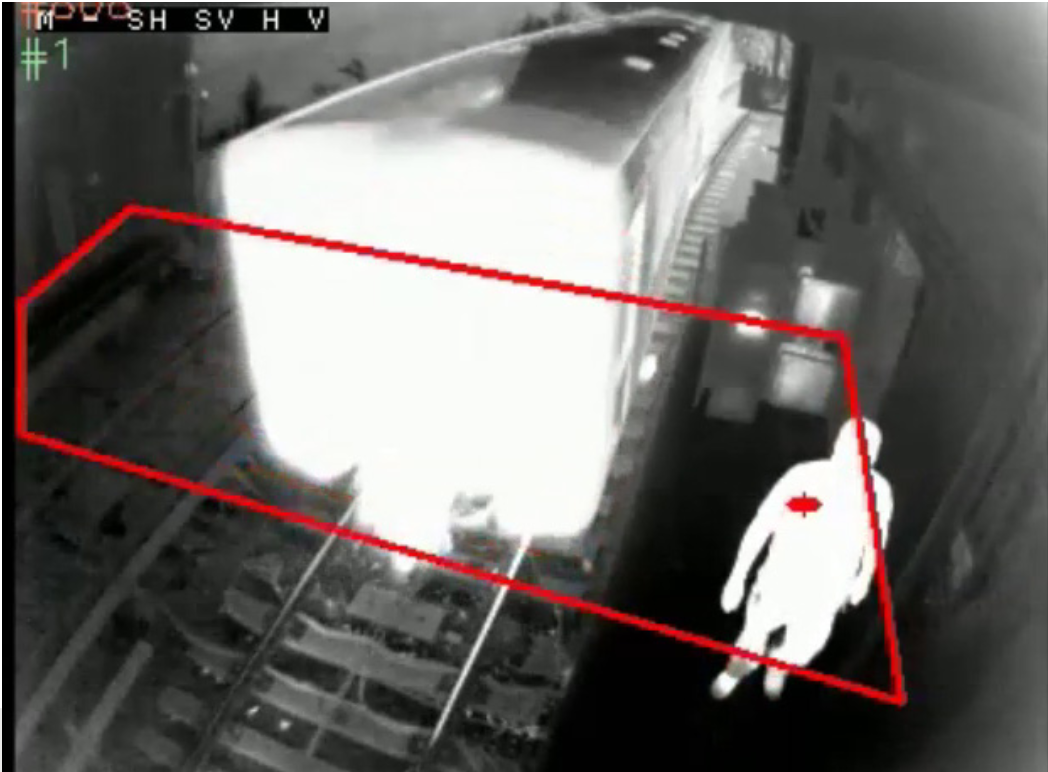
Using a dedicated algorithm, ThermiBot2 reduces false alarms by actively filtering out the motion of passing trains, while still detecting intrusions within tunnels. It can also be used as a dedicated train detection system with a very low false alarm rate.
Early Fire Detection
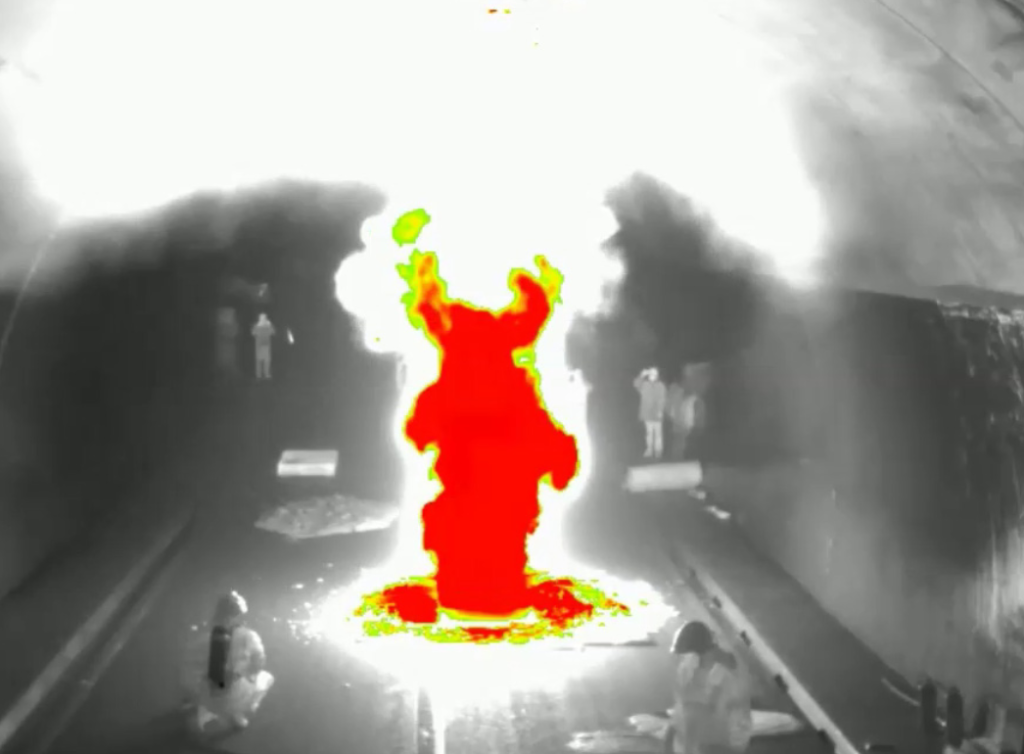
Thermal imaging allows the ThermiBot2 to recognize fires in their earliest stages. Intelligent video analytics can recognise a rapid rise in temperature and alert operators to signs of an impending fire.
TrafiSense2
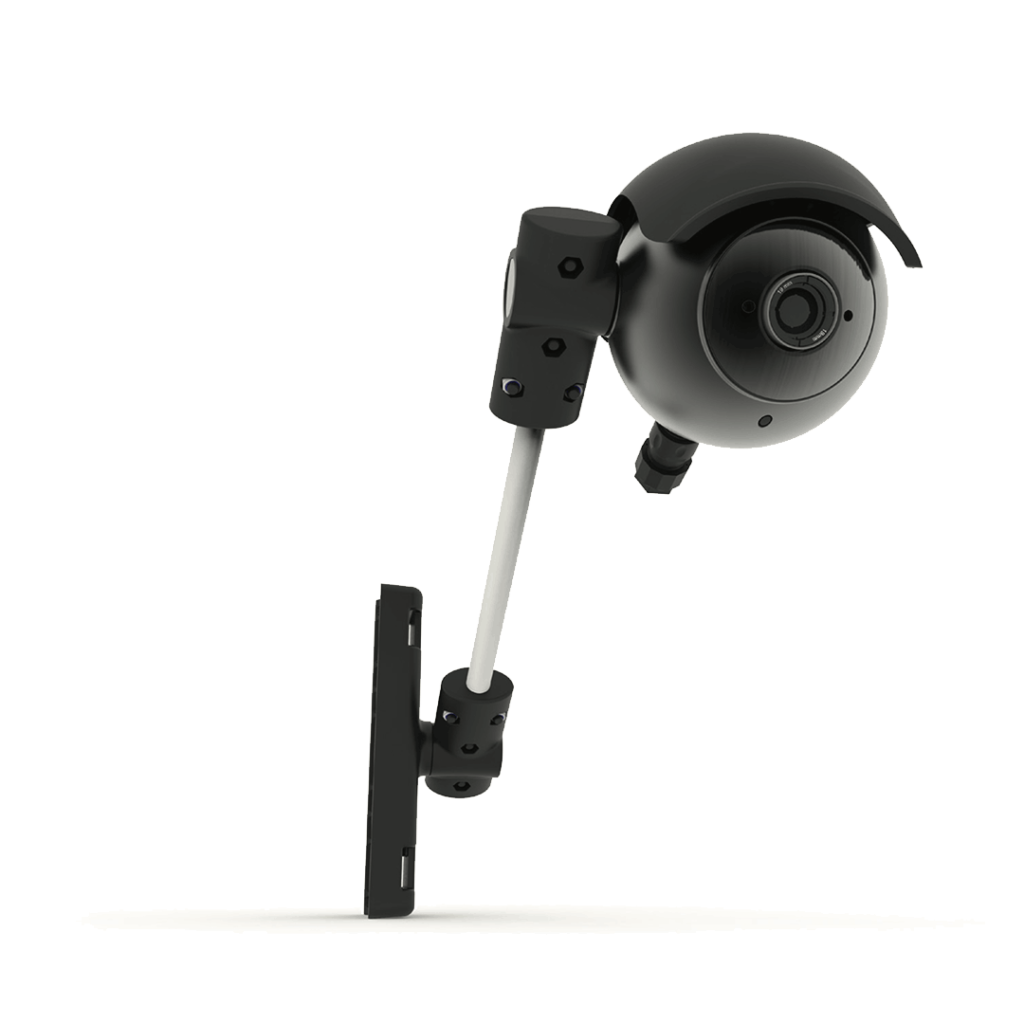
TrafiSense2 is an integrated thermal sensor and detector for level crossing safety. Intelligent algorithms immediately alert operators when the TrafiSense2 detects objects stuck on the level crossing, increasing the overall safety of pedestrians and commuters. Thermal technology allows the TrafiSense2 to operate 24/7 and in any weather condition without the need for visible light illumination.
Safe Passage
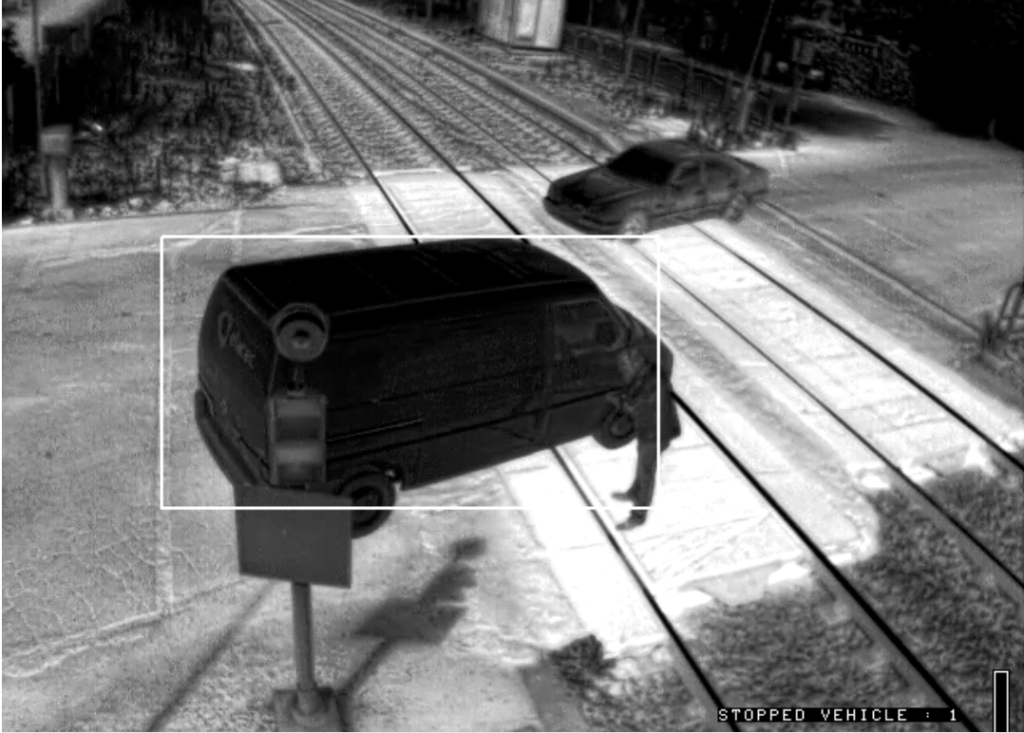
When crossing barriers are open and no train is approaching, TrafiSense2 uses internal algorithms to detect stationary objects on the level crossing. If the object does not move in a preconfigured amount of time, TrafiSense2 alerts operators to intervene before an accident occurs.
Immediate Verification
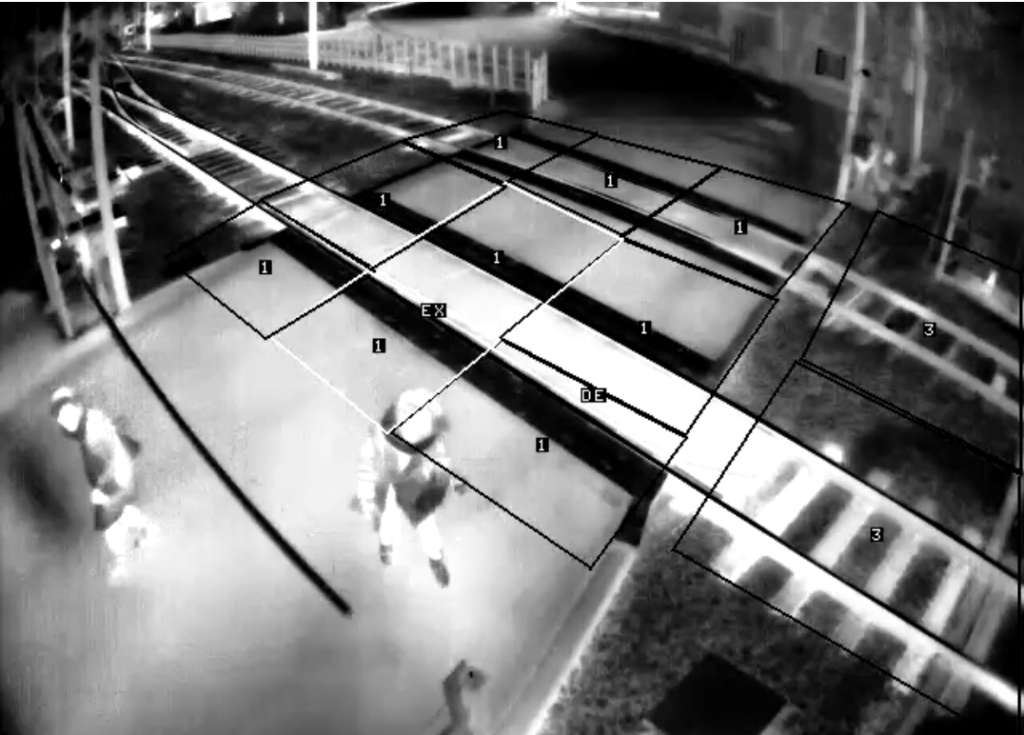
When a train is approaching—and time is of the essence—TrafiSense2 immediately verifies that the level crossing is clear, and reports back to the control room in case of problems, which allows operators to quickly react to the potential threat.
Reliable Thermal Detection

Because FLIR thermal technology sees heat, rather than visible light, TrafiSense2 has the power to detect the presence of objects, pedestrians, and vehicles in low visibility environments, including total darkness, glaring light, and light fog.
Proven Application
Belgian rail infrastructure management company, Infrabel, uses FLIR thermal imaging cameras to detect people walking on the tracks. Where in 2018 there was 768 intruder instances, which caused 139,000 minutes of delay. Infrabel uses 30 FLIR thermal imaging cameras to look for intruders inside the North-South railway tunnels. Upon detection, an alarm is activated and a control room operator is warned of oncoming danger.
The system uses advanced detection algorithms in order to accurately detect people without being triggered by unwanted objects like small animals or passing trains. Infrabel put forward a demanding requirement of 99% detection accuracy, which the FLIR cameras have been able to achieve.
Enhancing Public Transportation Safety
As can be seen, thermal imaging can provide an enhanced level of detection and awareness in a variety of applications around critical rail infrastructure. Whereby protection, security and functionality can for the most part be assured. Ensuring tracks remain exclusively for trains by preventing incursions to keep rail on-schedule, safe and secure.
For more information on how Armitage Group can provide intelligent detection solutions for critical rail infrastructure Contact Us.

